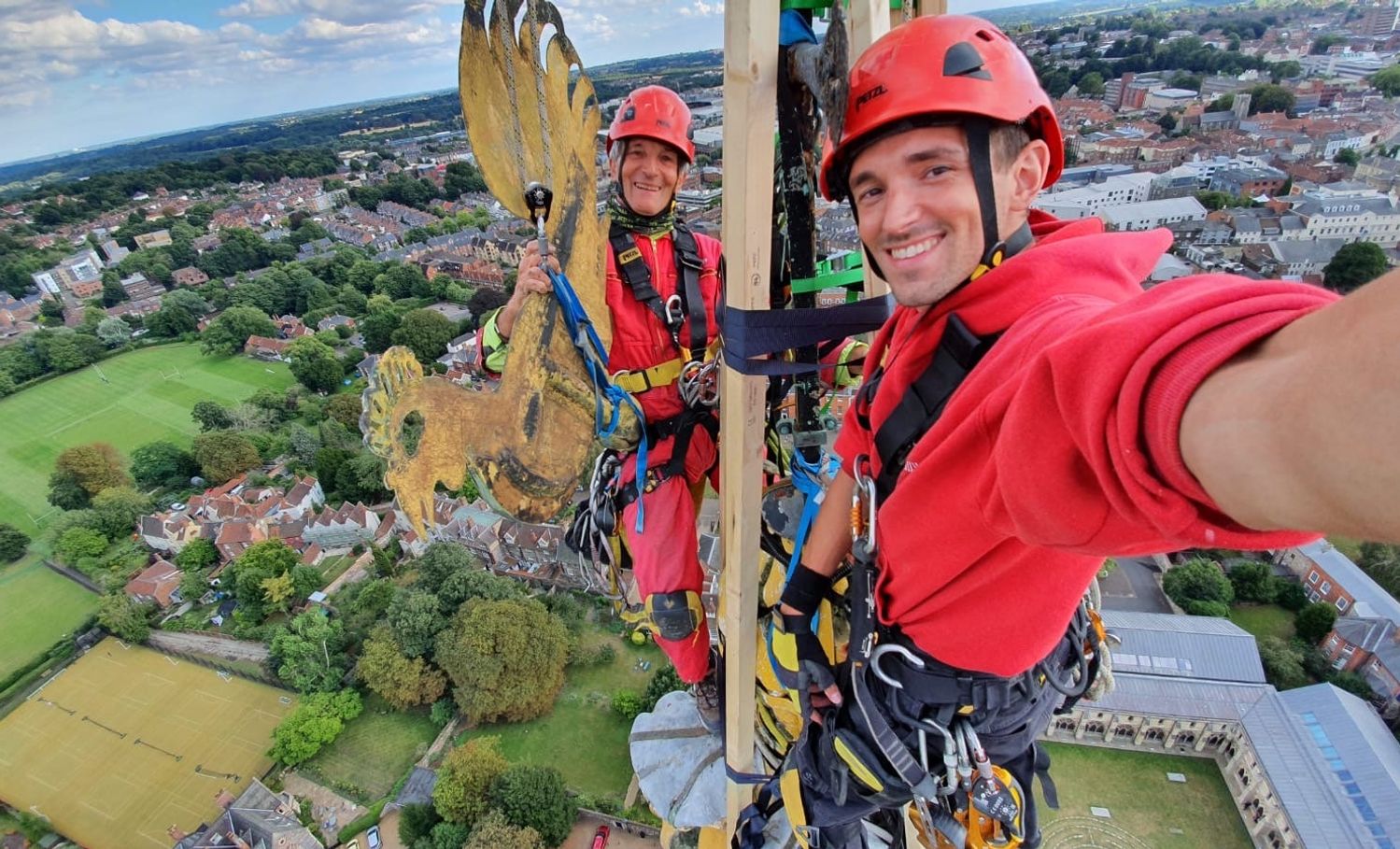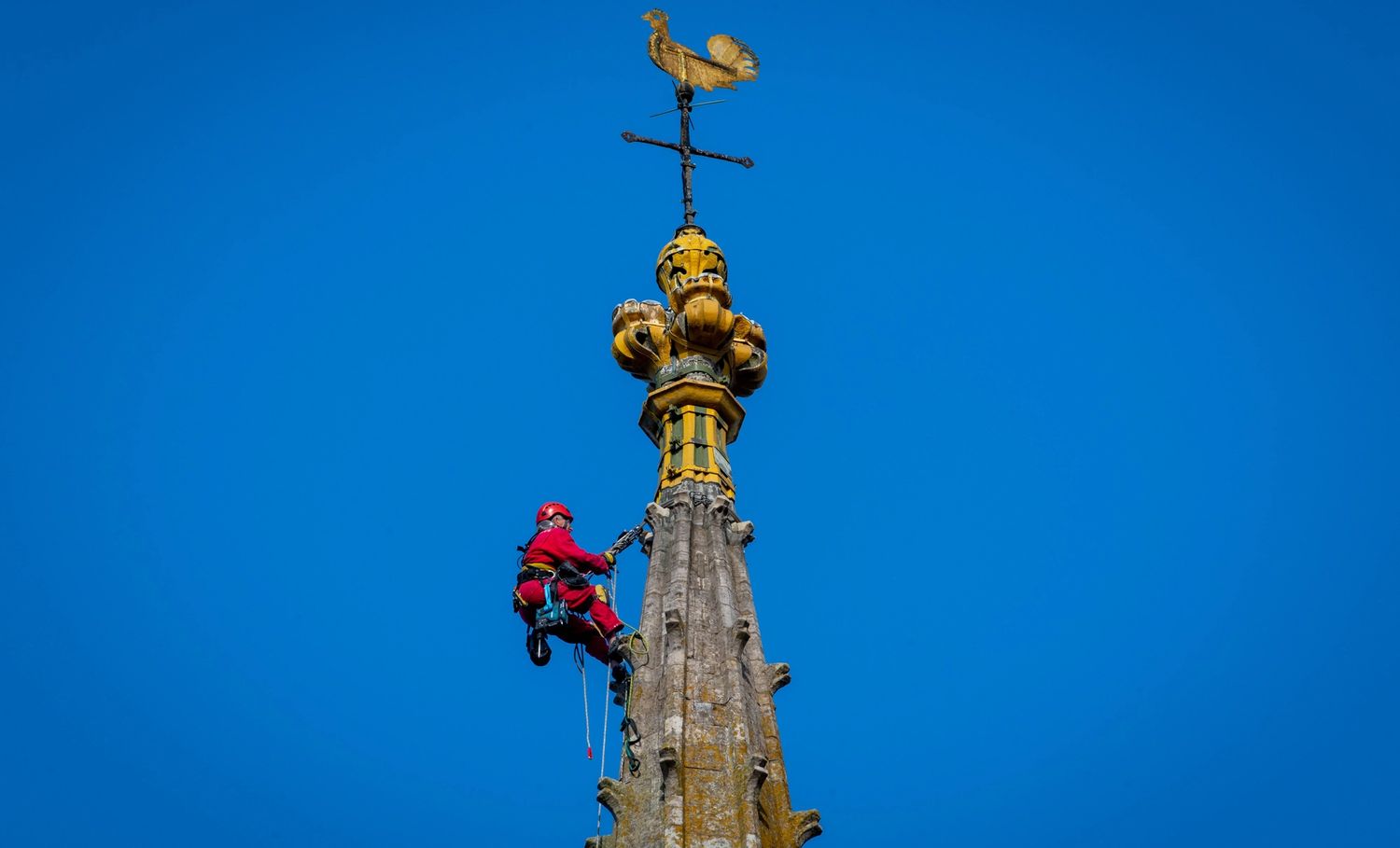Weathercock

A golden weathercock crowns the 96m spire
A golden weathercock crowns the highest point of the Cathedral’s 96 metre (315ft) spire.
Measuring 83cm (2ft 9ins) in height, it shines brightly from on high thanks to specialist restoration work in 2020 which saw father and son team Sam and Chris Milford, from the Bristol-based WallWalkers, scale the spire to bring the weathercock down to the ground to be regilded.
Restoration works results in a new discovery
Previous records had suggested the weathercock had sat on the top of the spire since at least 1756, when the top part of the spire was rebuilt by John Parsons. However, on its recent trip back to ground level, the discovery of a 1668 date-mark on the metalwork (pictured) suggested the weathercock was actually older than first thought.

1 / 7

2 / 7

While doing the regilding work with gold leaf, the WallWalkers team were careful to ensure the 1668 date-mark, and all the other textures and marks from times gone by, could still be seen through the weathercock’s shiny new coat.
Chris Milford said: “These textures and marks on the weathercock are all part of its story and they give a real sense of its history. We wanted to ensure they were all still there for future generations to see. It is a real privilege for the WallWalkers to be involved in the latest layer of the story of Norwich Cathedral’s weathercock and to help preserve it for long into the future.”

